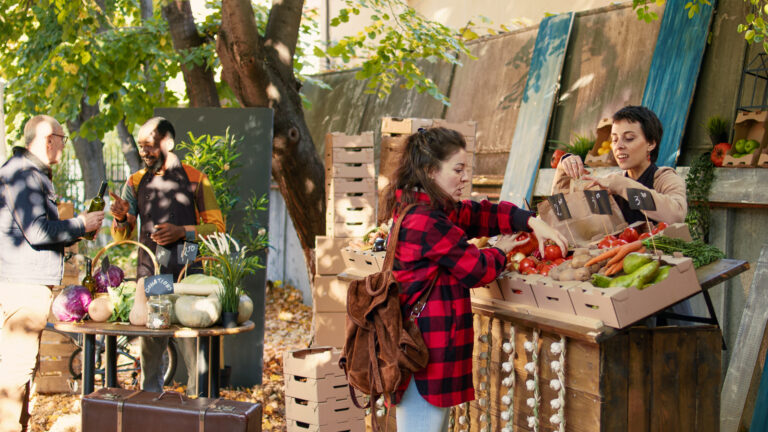Theme
Future outlook on climate change
Activity Duration
1,5 to 2 hours
Group Size
15-25 youngsters
Objectives
The working method has the following learning objectives:
● The youngster can explain what future images he or she has regarding climate change.
● The youngster can explain how he or she can reduce influence on climate change.
● The youngster can articulate feelings about climate change and discuss them with others.
In addition to the cognitive, affective, and social goals, this working method also tries to change the attitude of young people slightly:
● The working method aims to reduce feelings of fear about a disastrous future and feelings of despair about limited influence on the future.
● The working method seeks to enhance feelings that a better future is possible and that we can contribute to it.
Description
Climate change is a sensitive topic for many young people, which can be accompanied by feelings of fear, frustration, and hopelessness. This is exacerbated when it is linked to concerns about wars, poverty, housing shortages, migration, and racism. It is an overwhelming and frightening fact that your future is at stake. Conversations with teachers and students revealed a need to share feelings about climate change. It can help students to know that they are not alone in their feelings. This can also lead
to a search for positive developments. The method ‘Where do you stand?’ was developed in the early 2000s by futurist and teacher Peter Hayward, based on the ideas of sociologist Frederik Polak. In his book ‘The image of the future’ from 1961, Polak makes a distinction between thinking about the
essence of the future (positive or negative) and thinking about one’s own influence on the future (a lot or a little). In this learning activity, you get your students to think about these questions.
Teachers indicate that they find this approach pleasant to use as an introduction to the conversation and reflection on the future. They see that it can serve not only as an introduction but also as a conclusion to
complete the circle; has our thinking and feeling about the future changed? Where do you stand now?
Materials/Tools
Smartboard
Post-its
Marking tape
PowerPoint presentation (optional)
Space (indoor, outdoor,
settings…)
Indoor or outdoor
Structures/steps (timing)
Step 1: Introductory exercise – association
With this exercise you introduce thinking about the future. As a teacher, you let the students imagine there country in 2050 ( state that they are then about the same age as their parents now).
Ask students to state: “what do you think your country looks like in 2050?”. You deliberately keep the space open here for all themes that may play a role in students’ minds besides climate change, such as poverty, discrimination, fear of AI, etc. In the next step, as a teacher, you only focus on climate change.
In keywords you make a mapping of the things that students mention; options to do this are:
● students write post-its and stick them on the board
● students call out (in turn) and teacher writes on post-its and sticks them
on the board
● students think for themselves first, and teacher then asks the class and
writes along on the board
● students make a mapping in groups of 3-4 students, one group member presents briefly
to the class or to the teacher. This can result in the following keywords, for example;
“drought”, “war”, “lots of free time”, “more technology”, “no more
capitalism”, “green cities”, “everyone vegetarian”, “life on mars”.
Then you cluster the input on the board. You write the following categories on an A4 and place the relevant post-its around them:
● how we live
● what we eat
● how we work
● what we do in our free time
● how we travel
● what kind of technology there is
● what kind of social problems there are
From here you can start a discussion with the class with a look at the
board.
● clusters where students have a (completely) different view of 2050
● clusters where a lot has been said
● clusters where little has been said (possibly ask for additions to this)
● is this the country you want to have in 2050?
● which future visions do you nd positive, which negative?
● Do we already see things happening of the things mentioned? (we will no
longer eat animal products in 2050 -> already an increase in meat
substitutes and lab-grown meat).
You have now asked the students’ first associations with a future of the country. Now we can have a discussion about this by means of a set-up.
Step 2: Polak method: Positioning in a set-up
You have now given space to a full range of associations about the future. In this step, you make the link to the topic of climate change. You ask them to name how this issue influences their view of the future.
You can perform this work form in the classroom or on the schoolyard.
In the classroom:
– A set-up: (before the start of the lesson) put the tables and chairs aside, so that there is a free middle space. First use masking tape to draw the axis optimistic/pessimistic on the floor.
– If you as a teacher doubt whether this will work for your group (e.g. thegroup is too large, the group is not safe, risk of herd behavior) you can also: Let the students ‘vote’ digitally and see how the class division isand have a discussion about this .
– Let the students draw their position on paper (which you collect and transfer to the board).
– Let them do this activity in groups, with a class discussion.
On the schoolyard: Draw a cross on the tiles in two steps with chalk. Write “positive” and “negative” on one axis of the cross, and “much influence” and “little influence” on the other axis.
Explain that we all have our own image of the future. This can cause one person to be excited about the future, while the other person is worried about it. Tell them that we are now going to look at how you think about the future. As a teacher, you are the facilitator of a conversation in this exercise. Your role is to create the space that makes everyone feel safe to share their thoughts. Explain that the goal is not to convince each other, and that there is no ‘right’ or ‘wrong’ answer. Name what you see.
If a small minority has a dfferent opinion than a large majority, you can name that and ask them if they find that dffcult. As a teacher, you can decide for yourself whether you (at a certain point) share with your students where you stand.
Sub-steps:
1) Teacher divides the class into two parts with a line and explains both halves; explanation of the
terms ‘optimistic/positive’ and ‘pessimistic/negative’.
2) Teacher asks students to think for 30 seconds about the question: “When I think about
climate change, I feel …”. / how they think they will experience the future of the country in 2050.
Then at START they choose a place in the room.
3) The teacher then gives them the following assignment: make pairs and discuss in 2 minutes why you are where you are.
4) The teacher asks who wants to explain or points to students. The goal is to listen to each other – there is no right or wrong and the goal is not to convince each other. If a student feels that he/she wants to move, that is possible.
5) Teacher asks the class; what do you notice? (for example, a lot of optimism in the classroom, a lot of division).
● If many students are standing at “I feel pessimistic about the future”, you can emphasize that they are not the only ones, and that more and more people are concerned about climate change. You can also show a PPT slide with news reports about research into how people think about climate change.
Feelings of frustration may arise, and students may say: “If adults don’t take the problem seriously and do something about it, what can we do?” It is good to acknowledge these frustrations. You could also
say that in the past hardly anyone took the concerns (of young people) about climate change seriously. Nowadays that is a bit more. So there is some progress. You can also emphasize that concerns can lead to
adjusting behavior and action, and asking questions about behavior (see the next bullet).
● Name what you see. If a small minority has a different opinion compared to a large majority, you can name that. You can also ask the class: What do you notice? Is there a lot of optimism or a lot of pessimism? Is there a lot of feeling of influence or little feeling of influence? You can also ask students who form a small minority whether they find that dfficult.
6) You can also share your own considerations; things that are positive (e.g. that we are paying more and more attention to nature) and that are reasons for pessimism (e.g. we have started flying a lot again after corona).
7) The teacher expands with a second axis that is perpendicular to the first axis. This creates 4 quadrants in the classroom. This axis asks whether you feel you have a lot or little influence on the future of the Netherlands in 2050.
8) Just like before: The teacher asks the students to think for 30 seconds, then at START they choose a place in the room.
9) Discuss in pairs in 2 minutes why you are where you are.
10) Teacher asks who wants to explain/points to students. The goal is to listen to each other – there is no right or wrong and the goal is not to convince each other. If a student feels that he/she wants to move, that is possible.
11) Class question; what do you notice? (for example, a lot of optimism in the class, a lot of division about the amount of influence).
12) The teacher asks the students as a class in what ways you can have influence. Ask questions to the entire class, for example:
a. “Can you think of ways in which you can have influence?” You can also give examples: eat meat less often, waste less food, take shorter showers, etc. Buying less clothing is a diffcult point, because many
students gain status from clothing.
b. “Who talks to their parents about how to live more environmentally friendly at home?”* You could give examples: talking about using the car less, flying less often, getting solar panels, insulating the house.
c. Who is thinking about doing something with sustainability in their studies or profession later on?
d. Who would vote for a political party that is committed to combating climate change?
e. What do you think about making the school more sustainable? (can you live with less meat in the canteen, no flights in the upper grades, heating lower?) Would you commit to that?
Extra: Tips for facilitating a discussion about emotions
A set of tips on how you as a teacher can facilitate this conversation in the classroom;
1. Ensure a safe atmosphere, no one’s opinion is laughed at, students should not feel forced or tempted to answer according to the norm, support someone who is alone in his/her opinion.
2. All emotions are allowed. Do not judge but take inventory. Try to understand the students (and make each other understand) from a sincere interest in their perspective and their world.
3. It is important not to focus on positive things from the start (example of action that has an effect, etc.), because then you quickly exclude negative feelings or they are experienced as undesirable. There must be sufficient space to express pessimistic feelings.
4. Activate the students to talk about their emotions but do not force them. Give them the space to express themselves only when they feel safe.
5. If opinions and emotions get mixed up, redirect the conversation back to the emotion. (I see that you feel threatened / angry / misunderstood… can you explain where that comes from?)
6. Keep the outcome of the conversation open. We do not have to reach consensus. It is not a discussion in which we try to convince each other. The goal is to learn more about each other.
7. Sometimes it is nice to agree on clear rules of the game (e.g. passing the
baton, only responding to someone else by asking a question) or to use a specific methodology. This increases safety.
8. Be exible in time. Give yourself as a teacher the space to make a conversation shorter or longer than planned, depending on the reactions in the class. Build this exibility into your lesson plan.
Evaluation System/Tools
End the conversation calmly if it slackens o for a long time, becomes too intense, or if you think the goal of the conversation has been achieved. Also noting that there are major differences that we need to deal with is a solution.
Summarize the conversation objectively. Name the different emotions that have come up. Reflect on the atmosphere, the safety and the attention for each other.



